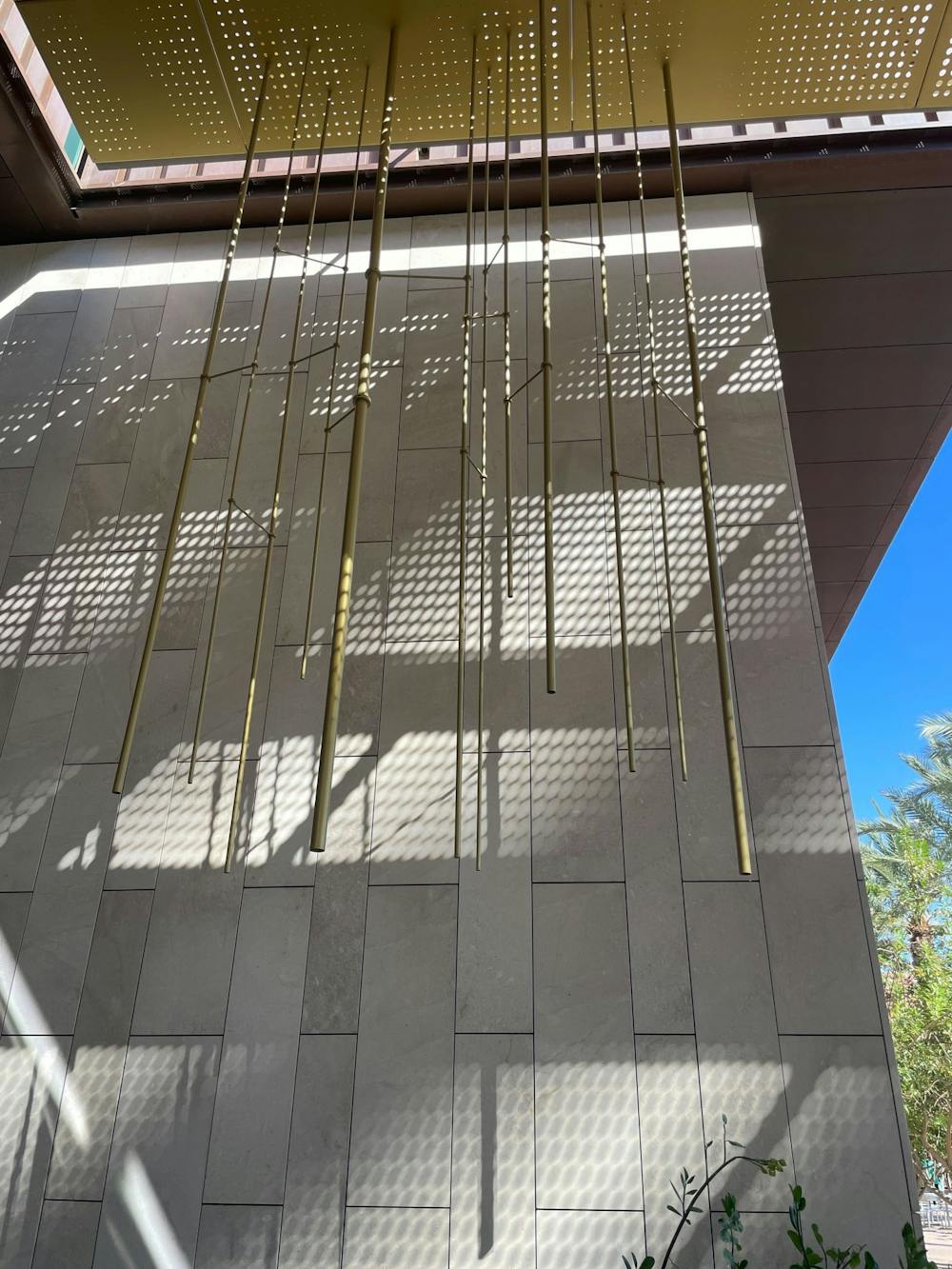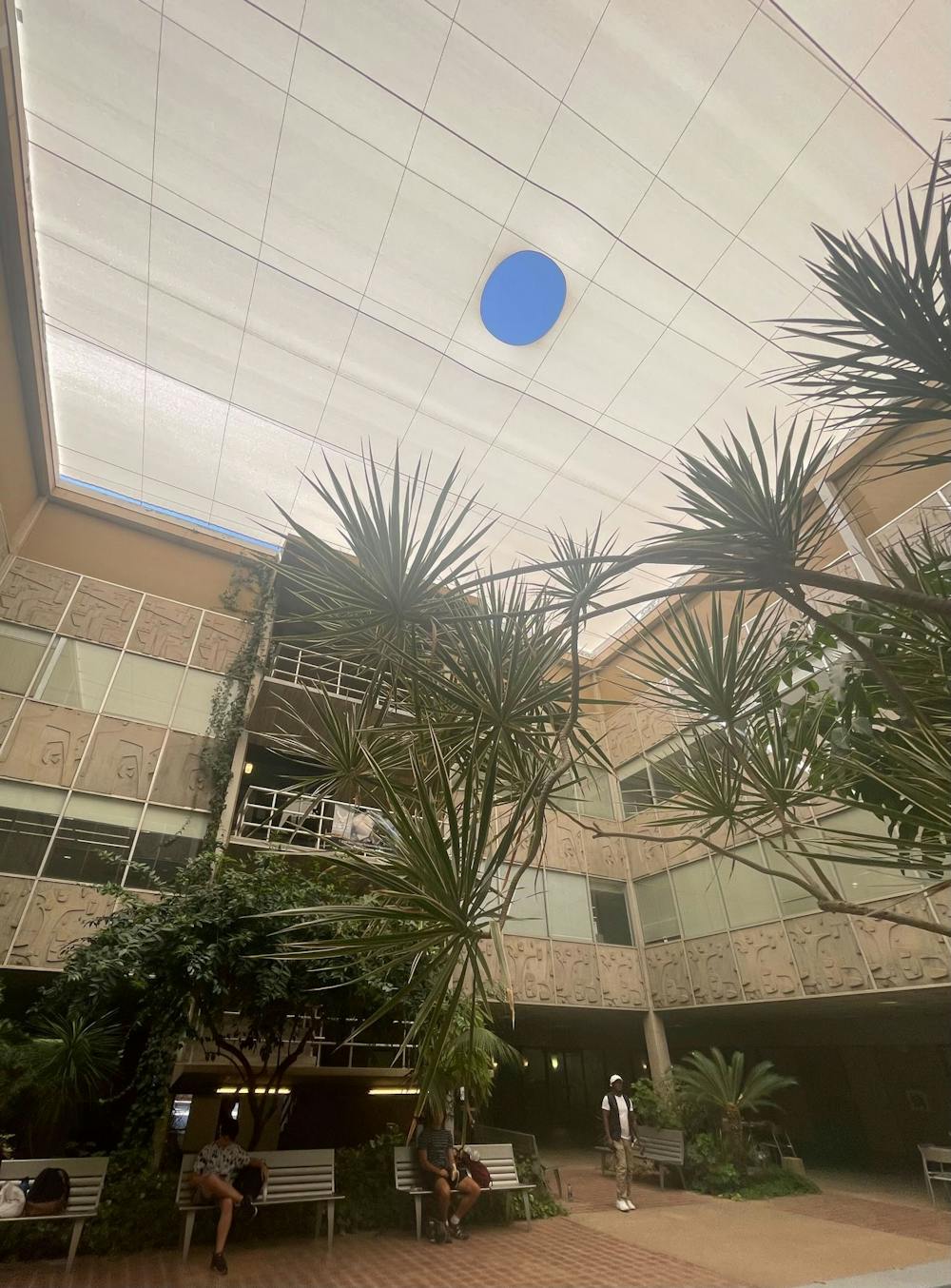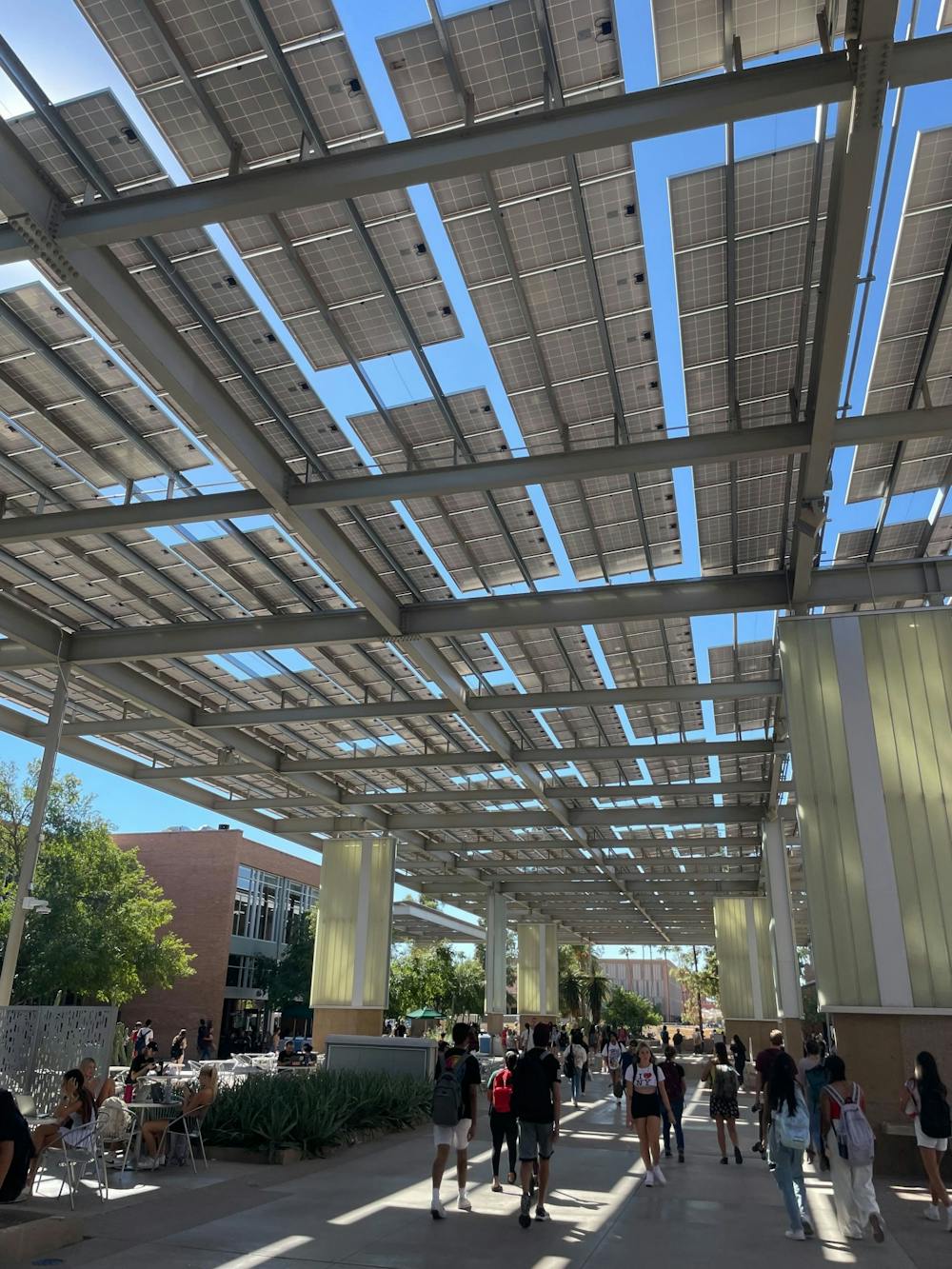While walking around the Tempe campus, students might take a moment to sit in the shade under a giant solar panel out front of the Memorial Union.
However, many students might not know that technologies like solar panels have helped ASU earn national recognition for sustainability practices.
October was Campus Sustainability Month, and ASU held walking tours that featured locations and technologies best exemplifying the University's efforts in sustainability.
Here are some of them:
Central Plant Water Capture Project
ASU requires over a billion gallons of water annually to operate, as the desert requires high levels of air conditioning.
Water is central to sustainability in Arizona because many areas of the state are in severe drought this year, according to the Arizona Department of Water Resources, and ASU is not exempt from those challenges. Part of how the University approaches the water crisis is through the Central Plant Water Capture Project (CPWCP).
ASU pumps water through the central plant to provide air conditioning to buildings across the nearly 650-acre Tempe campus. The plant "uses 600 million gallons of water a year," said Kirby Skoric, a graduate student in the field of sustainability who is an intern through the College of Global Futures.
READ MORE: ASU kicks off Sustainability Month with a chalk art event
Because the plant requires over half of the total University’s water to operate annually, ASU has had to be creative in reclaiming the water used in air conditioning.
The central plant on the Tempe campus processes water used in air conditioning on campus. Reject water from the plant, approximating 13,500 gallons daily, is recycled for cleaning outdoor spaces via the CPWCP.
“It’s important to find sustainable practices that will both make livable spaces and livable buildings while also cutting down on our water usage because it's inevitable and (we) live in the desert," said Maddy Greathouse, a sustainability intern through the College of Global Futures.
ASU maximizes the function of water used to condition the air on campus by reclaiming various air conditioning units' condensation for vegetation on the Tempe campus.
READ MORE: One billion gallons: ASU and the future of the Colorado River
Passive cooling and solar
The Student Pavilion was constructed to be energy efficient through high-efficiency HVAC systems and aluminum paneling throughout. Aluminum panels redirect some sunlight that otherwise warms the indoor air. This creates a chilled environment through passive solar — which takes advantage of a building's site, climate and materials to lower energy use — Greathouse said.
The Student Pavilion, built with a “net-zero” rating, is certified LEED Platinum, meaning the U.S. Green Building Council awarded it with its highest rating.
Similar to the Student Pavilion, the Social Sciences Building features an indoor-outdoor plaza with passive cooling, the cooling of space without continuous use of power or water.
"It's super important to find sustainable solutions that can cool these spaces without having to use power or water," Skoric said.
Without air conditioning, the space is often 5 to 10 degrees Fahrenheit cooler than the outside of the building, Skoric said. This allows students and staff to find respite from the sun amongst a collection of greenery and a pool, which each contribute to moderate temperatures.
READ MORE: The shade shortage: ASU's efforts and struggles to shield students in the Valley of the Sun
Shade and solar power
The Orange Mall Green Infrastructure Project was the revamping of a section of the campus between the MU and the Student Pavilion into a solar parasol and shaded community space that also generates solar power. The solar parasol minimizes sun exposure for students and generated nearly half a million-kilowatt hours of solar power in fiscal year 2021.
The solar parasol mitigates the impact of the urban heat island effect, Skoric said. This phenomenon involves an increased energy cost in air conditioning because of the replacement of natural landscapes with city structures, which retain heat, according to the Environmental Protection Agency.
Greathouse said the construction of the solar parasol, one of more than 90 solar installations across all ASU campuses, allows for the previously sun-exposed and underutilized area on the Tempe campus to seat students and provide a shaded thoroughfare for pedestrians.
Many of these University efforts in the last decade have caused ASU to leapfrog in the rankings according to Sierra Magazine.
Other ways ASU has gained recognition in sustainability
Part of the Sierra Club's rationale for awarding ASU the ranking of No. 1 most sustainable school for 2021 comes from the incorporation of the Global Institute of Sustainability and the Institute for the Future of Innovation in Society. This has led to the creation of new curricula and positions in ASU's undergraduate student government for students working with the Julie Ann Wrigley Global Futures Lab such as Grace Reiter, a sophomore in sustainability practices and senator for The College of Global Futures in Undergraduate Student Government.
Reiter has written the majority of the legislation that's passed within senate meetings with the intention of increasing online student inclusivity and campus sustainability within USG.
"The ASU sustainability program is obviously unique," Reiter said. "No other school has one like it."
Edited by Kaden Ryback, Wyatt Myskow and Greta Forslund.
Reach the reporter at greygartin@gmail.com and follow @greygartin on Twitter.
Like The State Press on Facebook and follow @statepress on Twitter.







